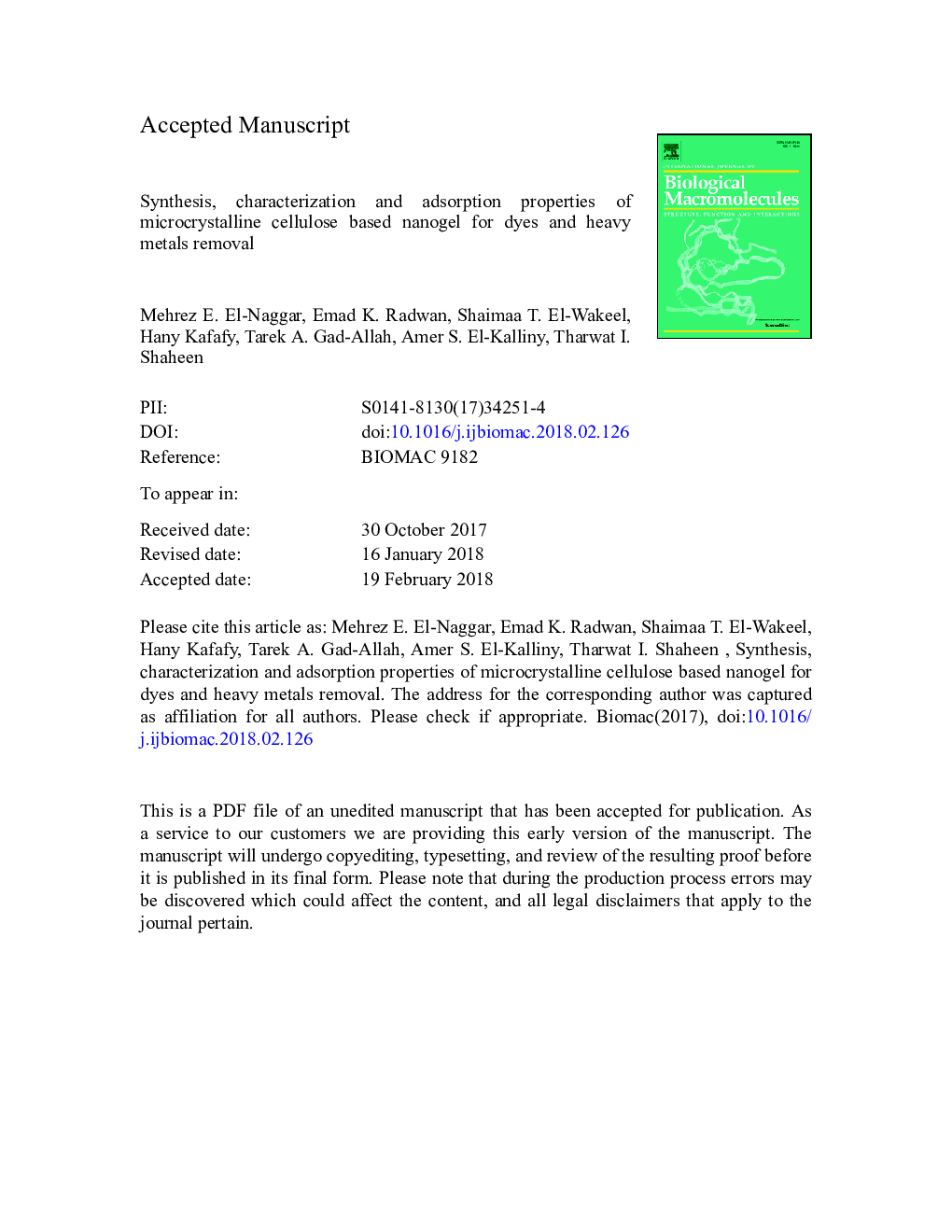| Article ID | Journal | Published Year | Pages | File Type |
|---|---|---|---|---|
| 8327449 | International Journal of Biological Macromolecules | 2018 | 39 Pages |
Abstract
Recently, naturally occurring biopolymers have attracted the attention as potential adsorbents for the removal of water contaminants. In this work, we present the development of microcrystalline cellulose (MCC)-based nanogel grafted with acrylamide and acrylic acid in the presence of methylene bisacrylamide and potassium persulphate as a crosslinking agent and initiator, respectively. World-class facilities such as X-ray diffraction (XRD), Fourier transform infrared spectroscopy (FT-IR), surface analysis, field emission scanning electron microscopy (FE-SEM), high resolution transmission electron microscopy (HR-TEM) and zeta sizer were used to characterize the synthesized MCC based nanogel. The prepared nanogel was applied to remove reactive red 195 (RR195) dye and Cd (II) from aqueous medium at different operational conditions. The adsorption experiments showed that the feed concentration of monomers has a significant effect on the removal of RR195 which peaked (93% removal) after 10Â min of contact time at pHÂ 2 and a dose of 1.5Â g/L. On contrary, the feed concentration has insignificant effect on the removal of Cd (II) which peaked (97% removal) after 30Â min of contact time at pHÂ 6 and a dose of 0.5Â g/L. The adsorption equilibrium data of RR195 and Cd (II) was best described by Freundlich and Langmuir, respectively. Conclusively, the prepared MCC based nanogels were proved as promising adsorbents for the removal of organic pollutants as well as heavy metals.
Keywords
Related Topics
Life Sciences
Biochemistry, Genetics and Molecular Biology
Biochemistry
Authors
Mehrez E. El-Naggar, Emad K. Radwan, Shaimaa T. El-Wakeel, Hany Kafafy, Tarek A. Gad-Allah, Amer S. El-Kalliny, Tharwat I. Shaheen,
